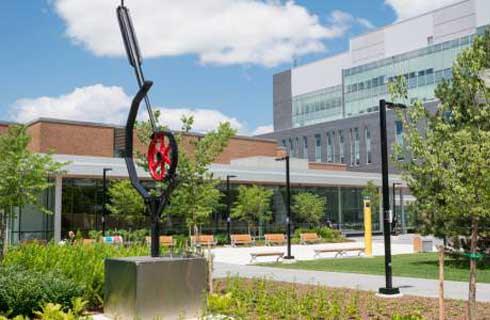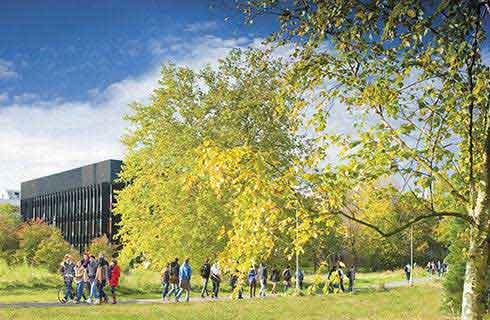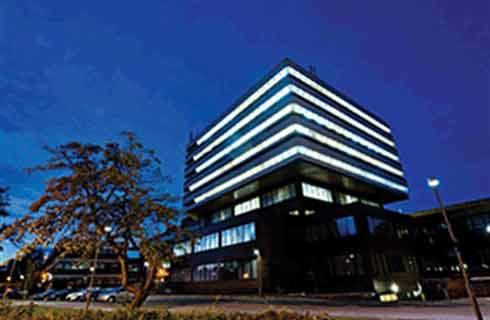国际学生入学条件
For research degree programmes the typical minimum entry requirement is a Bachelors degree (with Honours) at 2:1 level or better in an appropriate field of study. Equivalent overseas degrees together with an acceptable English language qualification are also accepted. Individual consideration is given to mature students with significant and relevant experience with professional qualifications. PhD students are allowed to progress into their next year of study if the assessed work at the time of the Annual Progress Report is at appropriate PhD level. Students registered for an MPhil also have to satisfactorily complete an Annual Progress Report.
IDP—雅思考试联合主办方

雅思考试总分
6.0
- 雅思总分:6
- 托福网考总分:60
- 托福笔试总分:160
- 其他语言考试:NA
CRICOS代码:
申请截止日期: 请与IDP联系 以获取详细信息。
课程简介
相关申请
 预科
预科 奖学金
奖学金 实习机会
实习机会 在校学习
在校学习 跨境学习
跨境学习 校园授课-线上开始
校园授课-线上开始 在线/远程学习
在线/远程学习
开学时间&学费
学费信息仅供参考,请与IDP联系以获取详细信息
| 开学时间 | 时长 | 学费 | 地点 |
|---|
学校排名

世界排名181
数据源:
泰晤士高等教育世界大学排名
关于利物浦大学

利物浦大学成立于 1881 年,是英国最早的 "红砖 ''大学,也是著名的罗素集团的创始成员之一,拥有九位诺贝尔奖获得者齐名。利物浦大学拥有近 32500 名学生,其中包括来自 187 多个国家的 7900 名国际学生,是一个多元化、热情友好的生活和学习场所。最先进的一流设施和出色的学生支持确保利物浦大学稳居英国大学20强(在《2026年泰晤士报和星期日泰晤士报优秀大学指南》中名列第18位)、全球大学150强之列(2026年QS世界排名)。该校在 "卓越研究框架"(REF 2021)中巩固了其世界领先研究机构的地位,该校 91% 的研究被评为世界领先或国际优秀。对学生来说,这意味着,在利物浦大学能够由一流的专家为其提供出色的教学,2023年英国政府卓越教学框架(Teaching Excellence Framework)授予该校的最高评级''黄金级''就是最有力的支持和证明。只有7所罗素集团大学因提供最优质的教学而荣获''黄金''评级,利物浦大学就是其中之一。利物浦大学是一所校园大学,坐落在充满活力的城市中心地带,拥有各种设施,其中包括一流的学生宿舍、图书馆、体育中心和学生会,这些都距离不远,步行很快即可到达。利物浦这座城市是披头士乐队、利物浦和埃弗顿足球俱乐部的家乡,除此之外,那里还有丰富的文化等待学生去探索。利物浦真的是一座无与伦比的城市,除伦敦以外,这里拥有英国最多的画廊和博物馆,还有各种各样的餐馆、酒吧和商店,可以满足各种预算和口味需求。此外,如果学生想乘坐火车去其他城市游览,只需2小时20分钟左右即可到达伦敦,36分钟可到达曼彻斯特。
本校相关课程

理学硕士城市再生与管理
学历文凭
Masters Degree (Taught)
开学日期
课程费用总额


马镇和区域规划
学历文凭
Masters Degree (Taught)
开学日期
课程费用总额


M / CD城镇与区域规划
学历文凭
Masters Degree (Taught)
开学日期
课程费用总额


硕士 历史-20世纪历史
学历文凭
Masters Degree (Taught)
开学日期
课程费用总额


MSc / PGDip / PGCert心理学研究方法
学历文凭
Masters Degree (Taught)
开学日期
课程费用总额


理学硕士放射计量学-仪器和建模
学历文凭
Masters Degree (Taught)
开学日期
课程费用总额

其他相关课程

规划硕士
 悉尼科技大学
悉尼科技大学学历文凭
Masters Degree (Coursework)
开学日期
课程费用总额


环境硕士-环境规划
 格里菲斯大学
格里菲斯大学泰晤士高等教育世界大学排名:258
学历文凭
Masters Degree (Coursework)
开学日期
02 March 2026
课程费用总额
AUD 43,000


建筑与规划(荣誉)文学士学位(预科课程)
 西英格兰大学
西英格兰大学学历文凭
Bachelor Degree with Honours
开学日期
课程费用总额


室内设计文凭
 昆士兰州公立职业技术学院
昆士兰州公立职业技术学院学历文凭
Diploma
开学日期
课程费用总额


BA (Hons) Urban Studies with Foundation Year
 谢菲尔德大学
谢菲尔德大学泰晤士高等教育世界大学排名:111
学历文凭
Bachelor Degree with Honours
开学日期
课程费用总额


MRes Architecture (Reading the Neoliberal City)
东伦敦大学
泰晤士高等教育世界大学排名:1157
学历文凭
Masters Degree (Research)
开学日期
课程费用总额















